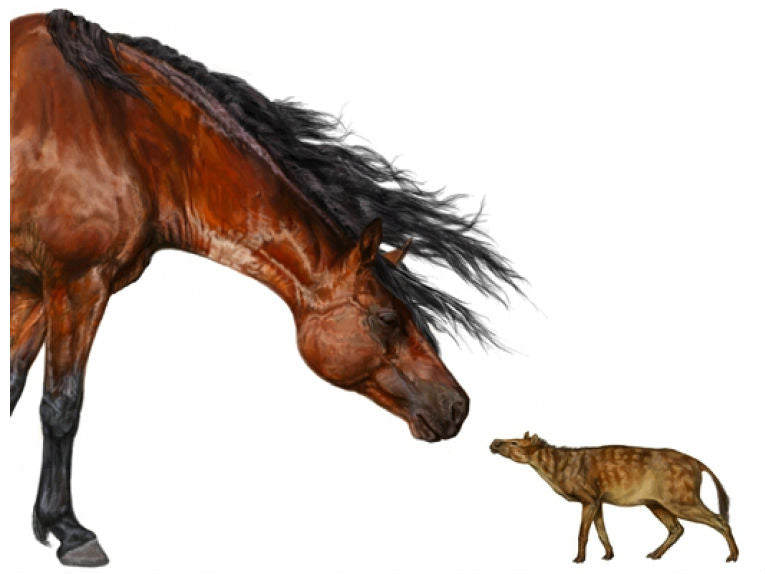Fifty six million years ago, there was a global warming event, known as the PETM (Palaeozoic Eocene Thermal Maximum), just before the appearance of early mammals. Horse evolution has been studied more than that of any other mammal with many genera displaying the classic reductions and teeth modifications that have been well-researched over many years. Paleontological research has now found a very early horse, Sifrhippus, just at the PETM. As this horse evolved, the warming spell was evidenced in Wyoming (with the earth's temperatures rising an average of 10 to 20o C at the time of the Palaeocene/Eocene split).
With data on various isotopes and aridity and CO2 concentrations now complete, the mirroring of the climate change in the horse size is quite exact. As the earliest horse .appeared, the temperatures then rose, and it became smaller. "This is the highest-resolution terrestrial record of its kind from anywhere in the world and it shows how climate changed in Wyoming at that time," said lead author Ross Secord. After the warming, horse size increased again, correlated with temperatures. . By analysing the size and isotopes of fossils collected in the Bighorn Basin, researchers traced the evolution of Sifrhippus from an estimated 12-pound animal that shrank during a 130,000-year period about 30 percent to 8.5 pounds - the size of a small house cat - then increased to about 15 pounds during the next 45,000 years.

Teeth of Sifrhippus at its larger size with teeth from the same species after its size shrank; Credit: Kristen Grace, UFL
Over this short time, animals were able to adapt into different species or varieties and become smaller. The horses are the best-documented Eocene mammals, and so it seems they simply represent size changes that will have occurred in primates and other mammals. "We're seeing about a third of the mammals getting smaller and some of them getting a lot smaller, by as much as half of their original body size," Secord said. "Because warming happened much slower during the Paleocene-Eocene Thermal Maximum, mammals had more time to adjust their body size. So, it's not clear that we're going to see the same thing happening in the near future, but we might."
So there it is, "from the horse's mouth." The message from this paper is that we might all be walking around at 3 feet tall if this rapid global warming continues. Adapt or go extinct is the message! The full paper was published in the journal Science.
Please follow us on Twitter @earthtimes or via Facebook.










